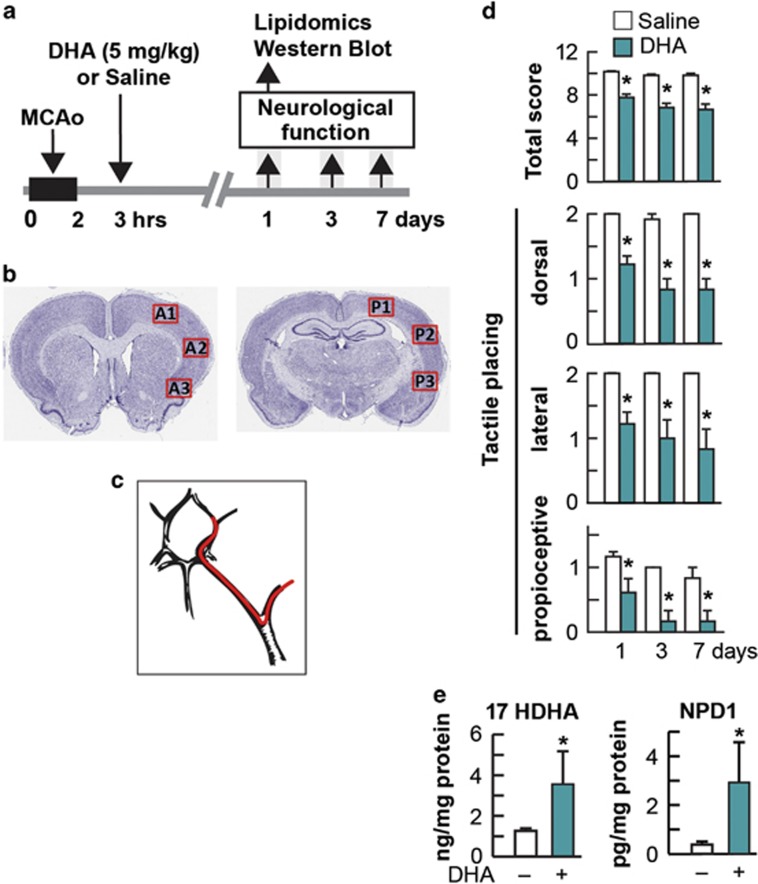Figure 6.
BIRC3 mediates the pro-survival response induced by the DHA/NPD1 pathway in an ischemia-reperfusion stroke model. (a–c) Model for inducing ischemia-reperfusion by middle cerebral artery occlusion (MCAo) in rats. (a) Timeline showing surgery, treatment and tests performed. (b) Coronal brain diagram (bregma level –0.3 mm) showing locations of regions for western blot and immunohistochemistry for Figure 7, and lipidomic analysis (A: anterior; P: posterior). (c) Diagram of MCAo model obtained by introducing intraluminal filament (red). (d) Total neurological score (normal score =0, maximal deficit=12), tactile placing (proprioceptive, lateral, dorsal reactions; normal score=0, maximal deficit=2) in rats after MCAo. DHA treatment improved the total and placing deficits on days 1, 3 and 7 compared with the saline-treated group. (e) Content of NPD1 and a second product of the stabilized precursor, 17HDHA, in penumbra regions of rats subjected to MCAo and treated with DHA or vehicle as a control. Data are means±standard error of the mean; n=6 per group. *P<0.05 in repeated-measures, ANOVA followed by Bonferroni test. DHA treatment=teal bars

